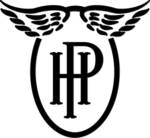
Hampden B. I

The Handley Page Hampden was
built to meet Air Ministry Specification B.9/32 and proposals
were submitted by Bristol, Gloster, Handley Page and Vickers.
Of the four two were accepted, Handley Page and Vickers with
prototypes being ordered on May 29, 1933. The bomber that was
to be come the Vickers Wellington was built and flown in
parallel with to the HP.52, the Hampden, and the two
prototypes were airborne within six days of each other. The
prototype made its first flight on June 21, 1936. Flight
trials proved satisfactory and the Air Ministry placed an
order for 180 aircraft in August. The first production
aircraft flew in May of 1938 and on June 28, 1938 was
christened by Viscount Hampden.
The Kit
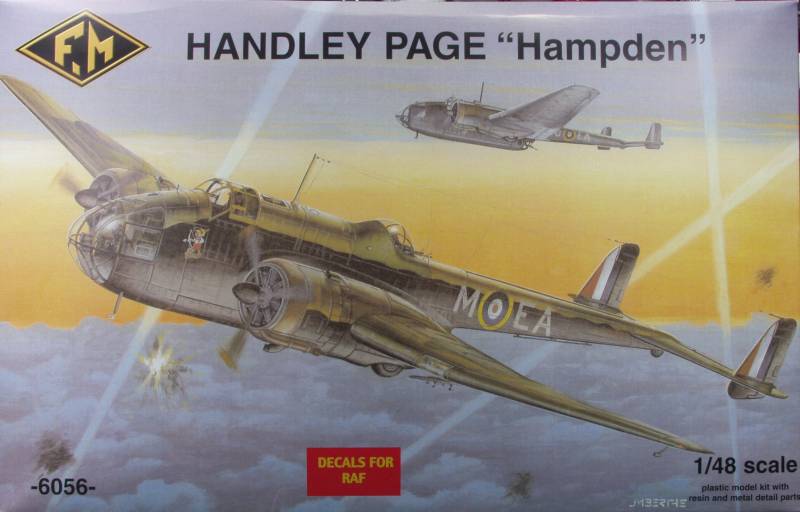
The Fonderie Miniatures kit comes is a fairly substantial top open two part box with nice artwork on the top. Inside the box are five sprues of low pressure injected plastics in a light gray color. These parts were not bagged but everything was still on the sprues except the lower wing halves which looked to have been removed from sprues at the factory. The clear parts were also not bagged and are vacuformed from a rather heavy clear stock, more on them later. There were two zip lock bags, one containing the resin parts and one containing the soft metal parts. The plastic parts are a good example of poor quality that results from the low pressure molding techniques and feature a lot of flash, a rough surface texture and heavy sprue attachment points. The surface detail features recessed panel lines that are reasonably uniform although there are a few places where they may need to be rescribed. The ailerons, flaps and rudders are all fixed, the horizontal stabilizer is a separate piece and could be positioned if desired. The fabric areas have raised rib tapes that are a bit over done but since the entire outer surface needs sanded these will probably look OK after that has been done. The interior is well detailed with injected molded parts for side wall details in the radio operators and gunners positions and mostly cast metal parts for the pilots position. The gear bays are also a nicely detailed assembly with structure for the sides and rear. There were no ejector pin stubs or marks to be found but the fuselage interior is rather rough as is the surface texture of most of the parts. All of the mating surfaces will need to be sanded on a flat surface prior to assembly to smooth them up. By my count there are 75 pieces in gray plastic. See photos below. Note: there are two identical sprues with the props on them, only one is shown.
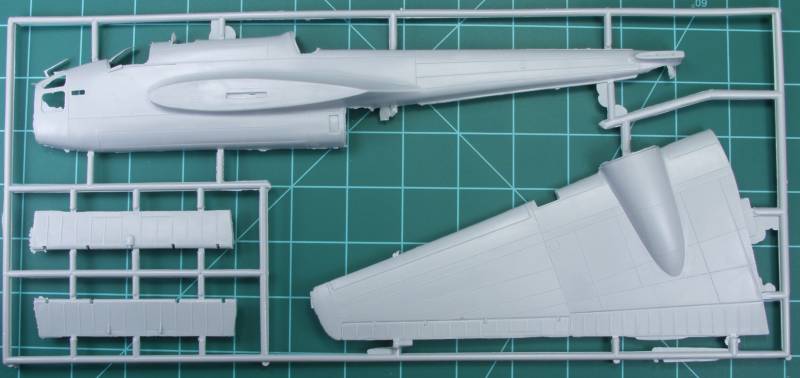
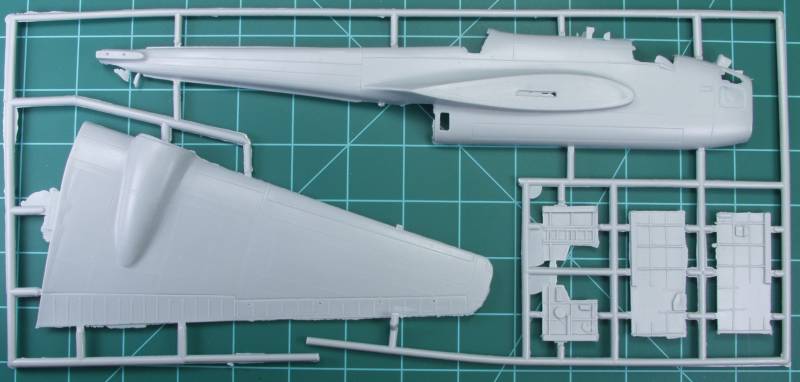
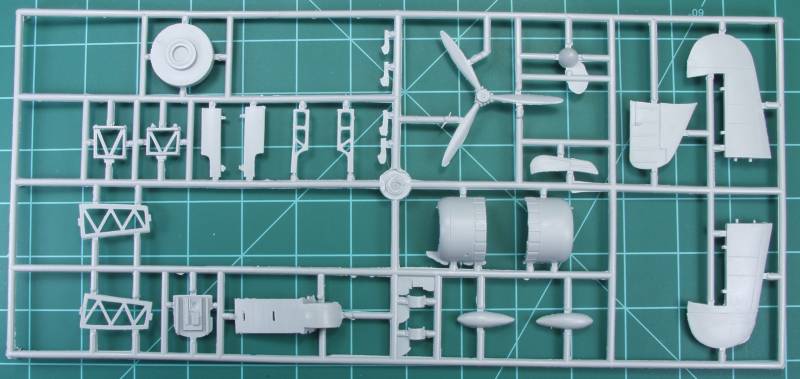
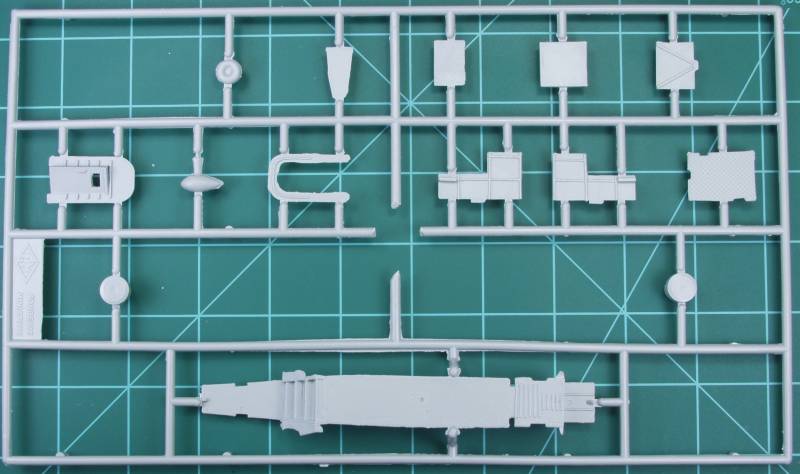
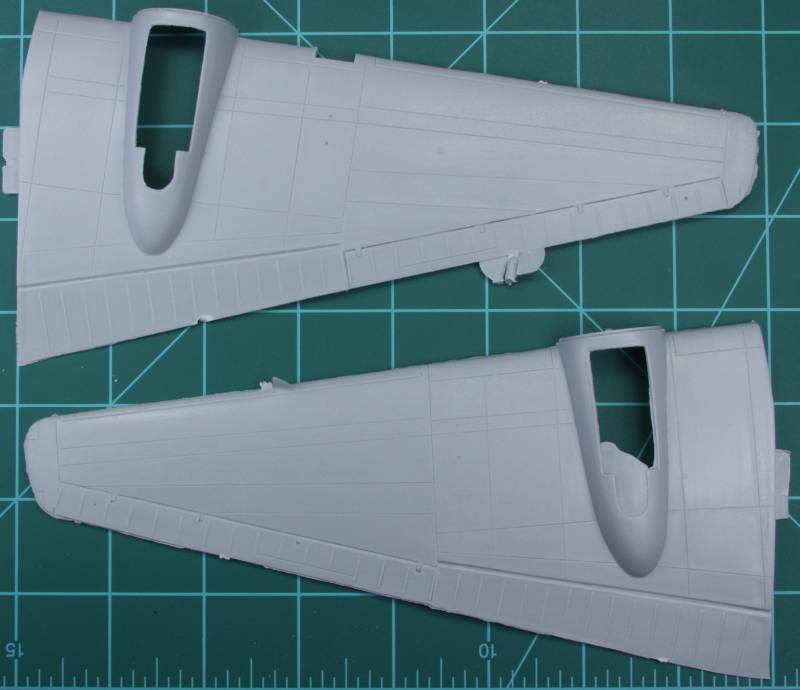
The cast metal parts include the cockpit side walls, instrument panel, rudder pedals, control column, pilots seat, compass, landing gear and tail wheel struts, exhaust stacks, intake scoops, aileron mass balances, four Lewis machine guns and extra cartridge magazines, DF loop, antenna mast and wing bomb racks. The metal parts are one of the highlights of the kit being very nicely molded with minimal flash and mold lines to clean up, a few of the parts will need to be straightened a bit but no major problems. All together there are 38 cast metal pieces, see photo below.
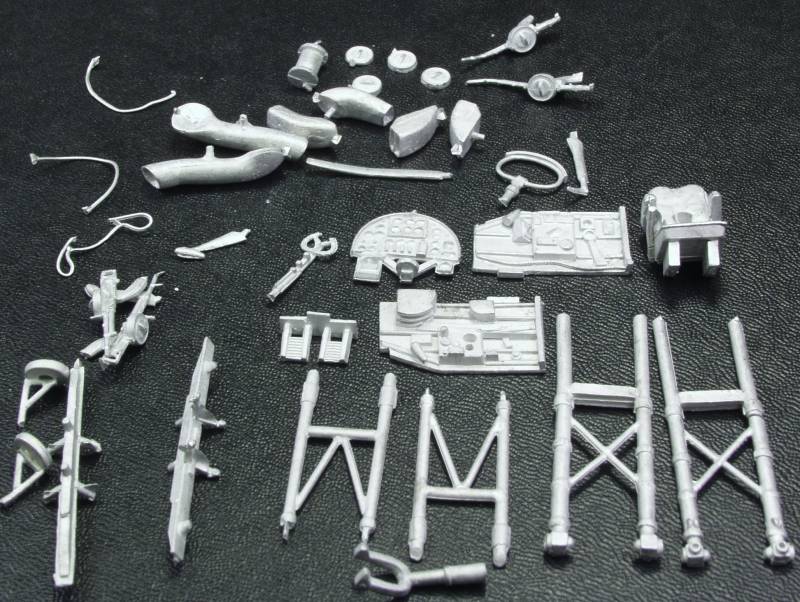
The resin parts are the other highlight of the kit and consist of the gear wheels, engines and shrouded exhaust stacks. The parts are molded in a light tan color, are not weighted but do have nice hub detail. The engines are also nicely done, they exhibit a bit of flash but this is thin and easily removed. The exhaust stacks in my kit were a bit rough, had some air bubbles and short shots in places, See photo below.
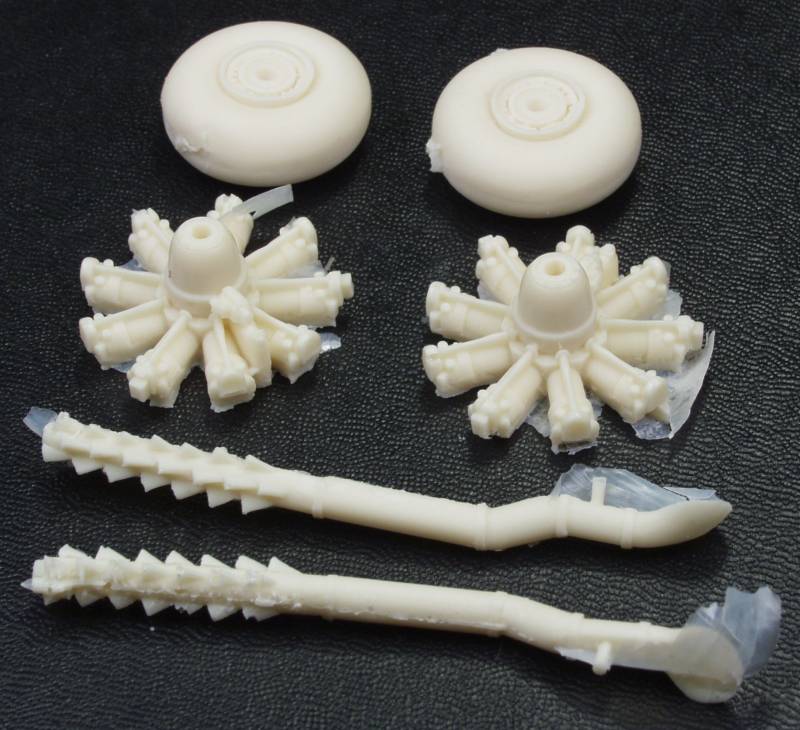
The clear parts are not very. They feature a rough surface that I doubt that anything will have much effect on them, Future or otherwise. The frame lines are nicely raised. I'm hoping they will be useful in the creation of a mold to make new ones, otherwise the interior detail will be mostly wasted. The only good thing about them is that there are two of each. See photo below.
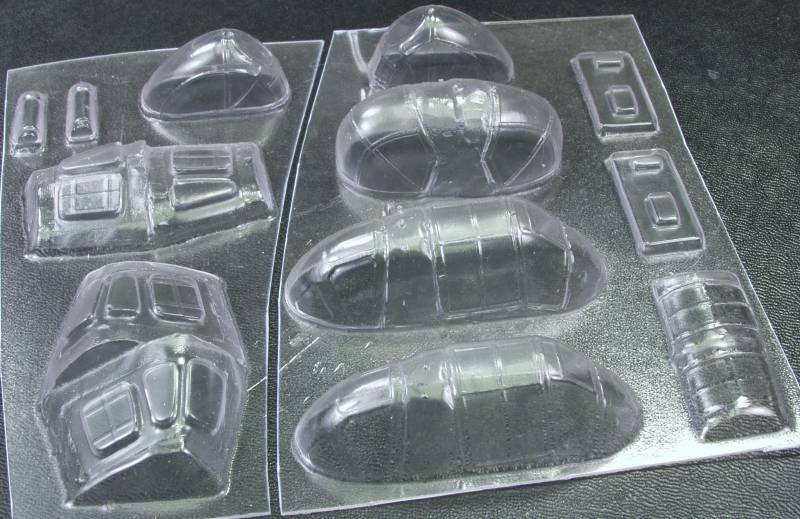
The decals feature marking for two aircraft and appear thin and are in register. They have a flat rather than glossy finish so I am dubious as to how well they will work. See below.
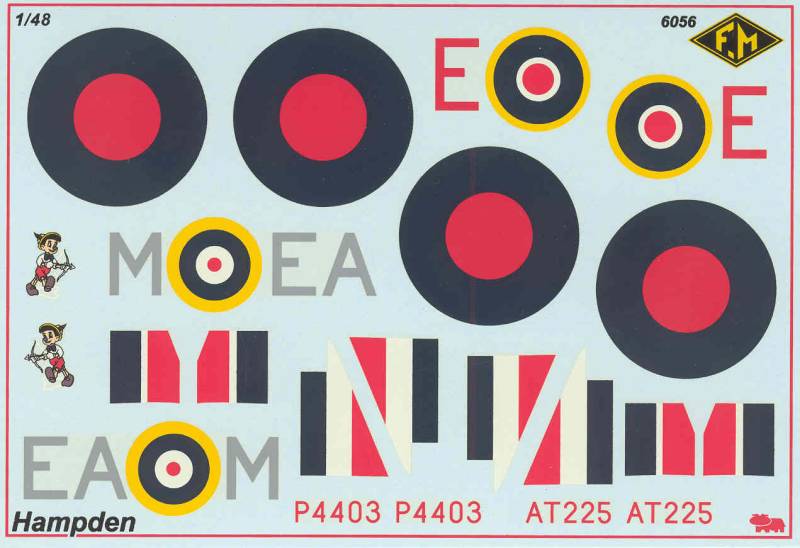
The instructions consists of three A4 size sheets, one sheet has decal and paint information on one side and a series of nine photos on the other showing various sub assemblies, one sheet has the aircraft's history in two languages on one side and the first two assembly steps on the other and the last sheet has the balance of the assembly steps.
After Market Goodies
I am aware of none.
Conclusions
I have a love hate relationship with Fonderie Minatures kits, I love their subjects but hate their kits. While they are not as bad as Mach 2 kits they certainly come close. Building them is a test of endurance and cleanup seems to be a never ending and grueling ordeal. Combine that with poor fitting parts and the need to sand the surface of virtually every parts and you have a kit only a glutton for punishment will love. This particular kit seems to be a bit better than another one of theirs I have dealt with but in good conscience I can only recommend the kit to die hard modelers who must have a 1/48 scale Hampden at all costs.
Links to kit build or reviews
A build can be found here and here, another in box review here.
References
Handley Page Hampden and Hereford, Warpaint series No. 57 by Alan W. Hall
Famous Bombers of the Second World War by William Green